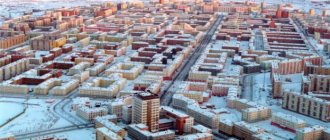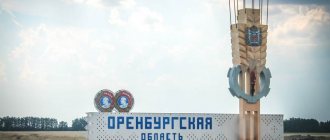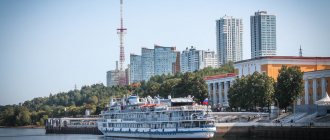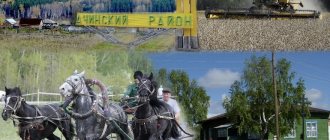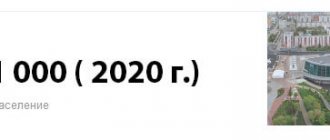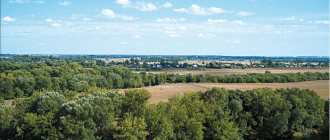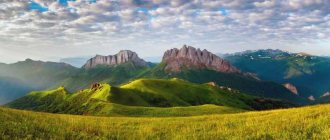What holiday is it today?
December 16, 2021, Thursday
Today are holidays, events: Events that happened on December 16 in the world, in different years Tomorrow: Day of Strategic Missile Forces Day of Employees of the State Courier Service Memorable date in the military history of Russia: Capture of the Ochakov fortress in 1788
Today is the Orthodox holiday of the Prophet Zephaniah. Reverend Savva of Storozhevsky, Zvenigorod. Martyr Angelis... Tomorrow: Great Martyr Barbara and Martyr Juliania of Iliopolis. Venerable John of Damascus...
Today is a national holiday: Day of World Silence and Silence... Tomorrow: Barbarian Day...
Seasons
Seasons, four periods of the year (spring, summer, autumn and winter) characterized by certain average temperatures. The period during which the Sun passes through one of these sectors is called the season. Spring in the Northern Hemisphere and autumn in the Southern Hemisphere begin when the Sun passes through the initial circle of declination and its right ascension is 0° (vernal equinox). Summer in the Northern Hemisphere and winter in the Southern Hemisphere occur when the sun's right ascension is 90° (summer solstice). Autumn in the Northern Hemisphere and spring in the Southern Hemisphere begin when the sun's right ascension is 180° (autumnal equinox). The beginning of winter in the Northern Hemisphere and summer in the Southern Hemisphere is considered to be the winter solstice, when the direct ascension of the Sun is 270°... Next: Seasons. Russian folk calendar. Monthly words...
Industry
Industry is well developed in the Perm region. More than 80% of industrial production occurs in the Perm-Krasnokamsk, Bereznikovsko-Solikamsk, Lysvensko-Chusovskaya and Tchaikovsky industrial hubs.
The local subsoil is rich in minerals. The world's largest reserves of potassium and magnesium salts and rock salt are concentrated here. Oil is also extracted here.
The first Russian diamonds were found in the Perm region. For a long time, they were mined here until they moved on to developing richer deposits in Yakutia (although the diamond reserves have not yet been developed).
Main industries: oil, chemical and petrochemical, forestry, ferrous and non-ferrous metallurgy, mechanical engineering. About 10 million tons of oil are produced annually. Leading mining company. The leading direction of the chemical industry is the production of mineral fertilizers, based on the world's largest deposit of potassium salts, Verkhnekamsk. and OJSC Silvinit are one of the world's largest producers of potassium fertilizers, and OJSC Mineral Fertilizers and OJSC Azot are among the largest producers of nitrogen fertilizers. The largest enterprises of ferrous metallurgy are the Chusovsky and Lysvensky metallurgical plants. Non-ferrous metallurgy is represented by the titanium-magnesium plant of the VSMPO-Avisma corporation in Berezniki, the magnesium plant in Solikamsk and OJSC Perm Non-Ferrous Metals. The largest machine-building enterprises are the Motovilikha Plants and the Perm Engine-Building Complex. Main industrial centers: Perm, Berezniki, Solikamsk, Lysva, Chusovoy, etc.
In the past, the Kizelovsky coal basin was famous in the Kama region. Now all coal mines are closed due to unprofitability, and the KUB territory is the most depressed in the Perm region.
There is also agriculture (mainly in the southern part of the region).
Folk calendar about every day
Every day one season always replaces another and this determines a person’s way of life. In connection with this, a folk calendar was formed in which there were practically no nameless, unmarked days. Every day was special, had its own purpose. All this was determined by climate conditions and astrological phenomena.
A calendar is a system for counting periods of time. The first calendars arose a long time ago, in ancient times, because there was a need to measure time. The word calendar comes from the Latin words caleo - to proclaim and calendarium - debt book. This is due to the fact that in Ancient Rome the beginning of each month was especially proclaimed, and because it was customary to pay debts on the first day of the month. Different peoples counted time differently. Some calendars are based on the changing phases of the moon - lunar calendars; in others - the change of seasons - sunny; in others, the length of the year was coordinated with the change of seasons, and the counting of months was associated with the phases of the Moon. Such calendars are called lunisolar.
In Rus', the calendar was called a monthly calendar. Every day, the month book covered the entire year of peasant life, “describing” day by day, month after month, where each day had its own holidays or weekdays, customs and superstitions, traditions and rituals, natural signs and phenomena. The cyclical nature of the calendar is reminiscent of human life, where spring is youth, summer is heyday, autumn is the time of harvesting fruits (it’s good if there are some, otherwise you can live your life without collecting fruits), winter is the time of wisdom and peace. This cyclicality and rhythm determined the way of life of the farmer. The folk calendar was an agricultural calendar, which was reflected in the names of the months, folk signs, rituals and customs. Even the determination of the timing and duration of the seasons is associated with real climatic conditions. Hence the discrepancy between the names of the months in different areas... Next: Folk calendar...
Perm region
The Perm region is located on the eastern edge of the Russian Plain and the western slope of the Ural Mountains, at the junction of two parts of the world - Europe and Asia, with 99.8% of the region's area located in Europe, 0.2% in Asia. The maximum length from north to south is 645 km, from west to east - almost 420 km. The borders of the region are winding and have a length of more than 2.2 thousand km.
It is located in the eastern part of the East European Plain and on the western slopes of the Middle and Northern Urals, in the Kama River basin. It borders in the north with the Komi Republic, in the east with the Sverdlovsk region, in the south with Bashkortostan, in the west with Udmurtia, in the northwest with the Kirov region.
In the Perm Territory there are two specially protected natural areas of federal significance: the Vishera Reserve and the Basegi Nature Reserve, as well as about 300 territories of regional and about 130 territories of local significance.
The main type of vegetation in the Perm region is forests, occupying 71% of the territory. The main tree species are dark coniferous: spruce and fir. At the same time, spruce clearly predominates.
As you move from north to south of the region, the proportion of deciduous trees gradually increases, the undergrowth, shrub layer, herbaceous and ground cover change. In the northern regions of the flat part of the region, spruce-fir forests are distributed in large continuous tracts. Under their canopy it is dark and humid, so the undergrowth and grass cover are poorly developed, and the ground cover is dominated by green mosses, on the elevations of the relief - hare's sorrel, and in the depressions - cuckoo flax. Such forests in the Kama region are usually called PARMA. They are allocated to the middle taiga subzone.
To the south of the latitude of the city of Berezniki, linden is mixed with spruce and fir at limestone outcrops. In these forests, which form the southern taiga subzone, the shrub layer is more diverse, and the moss cover is replaced by herbaceous vegetation. South of the city of Osa, the forests change again. Among the broad-leaved species, in addition to linden, there are maple, elm, elm, and sometimes oak, and among the shrubs - warty euonymus and common hazel. This is a subzone of broad-leaved taiga forests. The most typical area of such a forest has been preserved on the right bank of the Tulva River, in the Tulvinsky reserve.
Along swampy river valleys and near peat bogs, so-called sogro forests (spruce, spruce-alder, pine) are developed. They are characterized by a depressed state of the tree cover: dry tops, short stature, and twisted trunks. The ground cover is dominated by sphang mosses.
Pine forests are common in the north-west of the region, on sandy-clayey sediments left over from glaciation, along sandy terraces of large rivers. Among coniferous forests, pine forests occupy second place in the region.
A fairly large proportion of the tree plantations of the Kama region are small-leaved birch-aspen forests. Many of them are of secondary origin (they arose in the process of natural change of vegetation at the site of fires and during the cutting down of dark coniferous trees). In the forests of the northeastern and eastern parts of the region, along with dark coniferous species, there are light coniferous species - cedar and larch.
A significant part of the region's forests (over 50%) consists of mature and overmature plantations. About 20% of the forest cover is accounted for by young growth. The rest is middle-aged forests. Since intensive logging is carried out on the territory of the Perm Territory, permanent forest nurseries have been created where planting material is grown to organize reforestation work.
Meadow vegetation is widespread both in interfluves (dry meadows) and in river valleys (flood meadows with the highest natural productivity). About 10% of the region's territory is occupied by meadows and pastures. Swamp vegetation is present on 5% of the territory.
Animals of the Perm region are mainly represented by typical European species. About 60 species of mammals, over 40 species of fish, 270 species of birds, as well as several species of reptiles and amphibians live here. Of the predatory animals, the most widespread is the pine marten; there are foxes, wild boars, wolves, wolverines, badgers, and stoats. Elks, bears and lynxes can be found here. The common hedgehog, muskrat, and mink are quite small in number and need protection. The region abounds in lakes, rivers, swamps, overgrown floodplains, and forests. Grouse, wood grouse, tits, crossbills, and hazel grouse are common in the forests. Migratory birds include thrushes, swallows, and starlings.
Fishing calendar for every day
The fishing calendar should not be taken as an absolutely indisputable truth. Fish biting is greatly influenced by a whole range of natural factors, as well as the influence on the nature of man himself. You must not forget that the fish’s bite depends and is determined not only by the calendar dates and biological cycles of their life, reflected in the calendar, but also, no less, by the state of their habitat; the bite also depends on weather conditions: air and water temperatures, cloudiness, wind direction and strength, etc... Next: Fishing calendar...
Gender and age
The distribution of citizens in this region by gender is as follows. For every 1000 men there are the following number of women:
- 2005 – 1173.
- 2010 – 1183.
- 2015 – 1177.
- 2017 – 1176.
As can be seen from the presented data, the percentage of men to women remains practically unchanged. As for age characteristics, the distribution here is as follows:
| Age parameter | Men | Women |
| 0-4 g. | 2,74 | 3,15 |
| 5-9 years | 2,49 | 3,59 |
| 10-14 years | 2,51 | 2,96 |
| 15-19 years old | 3,69 | 2,62 |
| 20-24 years old | 4,49 | 2,29 |
| 25-29 years old | 3,95 | 3,05 |
| 30-34 years | 3,99 | 4,2 |
| 35-39 years old | 3,53 | 3,79 |
| 40-44 | 3,48 | 3,43 |
| 45-49 years old | 4,37 | 3,14 |
| 50-54 | 4,38 | 2,63 |
| 55-59 years old | 3,96 | 2,97 |
| 60-64 years old | 2,04 | 2,74 |
| 65-69 years old | 2,81 | 2,16 |
| 70-74 l. | 2,34 | 1,26 |
| 75-79 l. | 2,1 | 0,51 |
| 80-84 | 1,33 | 0,51 |
| 85-89 l. | 0,42 | 0,17 |
| 90 or more. | About 0.15 | About 0.05 |
Orthodox calendar about every day
Orthodox calendar: Orthodox, Church and Christian holidays.
The church year is an alternation of weekdays and holidays. On weekdays, a person is called to work “by the sweat of his brow to earn his bread.” Holidays are given in order to feel liberation, to rise above the bustle and routine of the world, to feel involved in the highest of worlds, “where there are no illnesses, sorrows and sighs, but endless life.” Since ancient times, holiday cycles have been associated with the seasons. The pagans associated them with the worship of the forces of nature, the cult of which in the Old Testament was replaced by gratitude to the Creator for the universe. And although the connection between holidays and the seasons has not completely lost its power, since God is present in everything, in the plant and animal world, in human works, it nevertheless faded into the background, giving way to a spiritual foundation built on the Sacred Scriptures. The history of Orthodox holidays dates back to the times of the Old Testament. Each of the Orthodox holidays is dedicated to the remembrance of the most important events in the life of Jesus Christ and the Mother of God, as well as the memory of saints... Next: Orthodox calendar...
Demographics[edit]
Kamskaya HPP, Perm
The population of the Perm Territory according to the 2010 census is 2,635,276 people; [9] compared to 2,819,421 recorded in the 2002 Census, [11] and further down from 3,099,994 recorded in the 1989 Census. [12]
Ethnic groups according to the 2010 census are: [9] Russians (87.1%), Komi-Permyaks (3.2%), Tatars (4.6%), Bashkirs (1.3%), Ukrainians (0.6 %), Udmurts (0.8%), Belarusians (0.3%), Germans (0.3%) and others. In addition, 119,538 people were registered in administrative databases and could not indicate nationality. The proportion of ethnic groups in this group is estimated to be the same as in the stated group. [13]
According to the 2002 census, there are about 40,740 Bashkirs in the Perm region. Most of them live in the Bardym region, in the Tulva River basin, and belong to the Gaina tribe.
Tatars live in almost all settlements of the Perm region. There are several different ethnographic groups of the Tatar people. There have been long-standing active contacts between Tatars and Bashkirs in this territory, so in some cases it is difficult to distinguish ethnic groups, especially in areas such as the Kuedinsky district and the Tulva River basin. [14] [15]
Settlements [edit]
| vthe Largest cities of the Perm Territory All-Russian Census 2010 | |||||
| Classify | Administrative division | Pop. | |||
| Perm Berezniki | 1 | Permian | Permsky district | 991 162 | Solikamsk Tchaikovsky |
| 2 | Berezniki | City of regional significance Berezniki | 156 466 | ||
| 3 | Solikamsk | Solikamsky district | 97 384 | ||
| 4 | Chaikovsky | Town of regional significance Tchaikovsky | 82 895 | ||
| 5 | Kungur | Kungursky district | 66 074 | ||
| 6 | Lysva | Lysva city of regional significance | 65 918 | ||
| 7 | Krasnokamsk | Krasnokamsk town of regional importance | 51 916 | ||
| 8 | Chusovoy | Chusovoy city of regional significance | 46 735 | ||
| 9 | Dobryanka | Town of regional significance Dobryanka | 33 686 | ||
| 10 | Chernushka | Chernushinsky district | 33 272 |
Vital statistics for 2007
: Source
- Birth rate: 12.05 per 1000
- Mortality rate: 15.70 per 1000
- Net immigration: -1.0 per 1000
- NGR: -0.37% per year
- PGR: -0.48% per year
Vital statistics for 2012
- Births: 38,847 (14.8 per 1,000)
- Deaths: 37,278 (14.2 per 1000) [16]
- Total fertility rate: 1.91
The mortality rate in some remote and rural areas of the Perm region is very high, which has never happened before in times other than major wars or natural disasters. Only in five districts out of 47 in the Perm Territory the birth rate exceeds the death rate. The birth rate in the Perm region is much higher than in other regions of Europe. For example, in 2007, the birth rate in Germany was 8.3 per 1,000 people. Perm as a whole has a 50% higher birth rate, and even the area with the lowest birth rate has a 20% higher birth rate than Germany. In 2008, the birth rate in the Perm region was 8% higher than in 2007. About 35.5 thousand births were registered, with the largest increase in the city of Perm (+ 11%) and the Komi-Permyak Autonomous Okrug (+ 18%). Among the districts in the city of Kudymkar, a 46% increase in the birth rate was recorded in 2008 compared to 2007, while Usolsky recorded an increase of 31%, and Kishertsky - by 29%. There were more births than deaths in 13 districts, including Ordynsky, Karagaysky, Kudimkarsky, Chernushinsky, Chaikovsky and Permsky.[17]
Total fertility rate: [18] [19]
1995 - 1.31 | 2000 - 1.26 | 2005 - 1.34 | 2006 - 1.34 | 2007 - 1.47 | 2008 - 1.57 | 2009 - 1.61 | 2010 - 1.77 | 2011 - 1.78 | 2012 - 1.91 | 2013 - 1.93 | 2014 - 1.98 | 2015 - 2.02 | 2021 - 1.99 (e)
Demographics for 2007[edit]
[20]
| District | Population | Births | Fatalities | BR | D.R. | NGR |
| Perm region | 2 718 227 | 32 747 | 42 680 | 12.05 | 15,70 | -0,37% |
| Bolshesosnovsky | 14 292 | 219 | 268 | 15.32 | 18,75 | -0,34% |
| Vereshchaginsky | 43 410 | 710 | 744 | 16,36 | 17,14 | -0,08% |
| Gornozavodsky | 27 885 | 396 | 582 | 14.20 | 20,87 | -0,65% |
| Elovsky | 12 299 | 176 | 229 | 14.31 | 18,62 | -0,43% |
| Kochevsky | 12 356 | 181 | 196 | 14,65 | 15,86 | -0,12% |
| Ilyinsky | 20 311 | 278 | 408 | 13,69 | 20.09 | -0,64% |
| Karagai | 23 907 | 360 | 381 | 15.06 | 15,94 | -0,08% |
| Kishertsky | 14 578 | 158 | 280 | 10,84 | 19.21 | -0,83% |
| Krasnovishersky | 26 287 | 335 | 455 | 12,74 | 17,31 | -0,45% |
| Kuedinsky | 30 576 | 446 | 489 | 14,59 | 15,99 | -0,14% |
| Kungursky | 46 370 | 727 | 720 | 15,68 | 15,53 | 0,01% |
| Kudymkarsky | 27 922 | 429 | 676 | 15,36 | 24,21 | -0,88% |
| Nitvensky | 45 552 | 656 | 858 | 14,40 | 18,84 | -0,44% |
| October | 34 789 | 481 | 585 | 13,83 | 16,82 | -0,30% |
| Ordinsky | 16 185 | 247 | 241 | 15,26 | 14,89 | 0,04% |
| Osinsky | 32 074 | 410 | 550 | 12,78 | 17.15 | -0,44% |
| Okhansky | 17 180 | 202 | 359 | 11,76 | 20,90 | -0,91% |
| Ochersky | 24 651 | 366 | 455 | 14,85 | 18,46 | -0,36% |
| Permian | 87 342 | 1,275 | 1,383 | 14,60 | 15,83 | -0,12% |
| Sivinsky | 16 797 | 297 | 266 | 17,68 | 15,84 | 0,18% |
| Solikamsky | 17 637 | 203 | 265 | 11,51 | 15.03 | -0,35% |
| Suksunsky | 20 925 | 294 | 349 | 14.05 | 16,68 | -0,26% |
| Uinsky | 12 631 | 180 | 212 | 14,25 | 16,78 | -0,25% |
| Usolsky | 13 788 | 176 | 299 | 12,76 | 21,69 | -0,88% |
| Chastinsky | 14 450 | 207 | 254 | 14,33 | 17,58 | -0,33% |
| Cherdynsky | 32 522 | 342 | 542 | 10,52 | 16,67 | -0,61% |
| Gainsky | 16 106 | 214 | 268 | 13.29 | 16,64 | -0,33% |
| Chernushinsky | 52 231 | 811 | 638 | 15,53 | 12.21 | 0,33% |
| Permian | 987 246 | 10 094 | 13 167 | 10,22 | 13,34 | -0,31% |
| Alexandrovsky | 34 554 | 427 | 662 | 12,36 | 19,16 | -0,68% |
| Berezniki | 165 950 | 1822 | 2,484 | 10,98 | 14,97 | -0,40% |
| Gremyachinsky | 15 075 | 178 | 367 | 11,81 | 24,34 | -1,25% |
| Gubakhinsky | 40 086 | 448 | 826 | 11,18 | 20,61 | -0,92% |
| Dobryansky | 61 365 | 792 | 950 | 12,91 | 15.48 | -0,26% |
| Kizelovsky | 30 837 | 381 | 827 | 12,36 | 26,82 | -1,43% |
| Krasnokamsky | 40 393 | 816 | 1,264 | 20.20 | 31,29 | -0,64% |
| Kungur | 68 074 | 872 | 981 | 12,81 | 14,41 | -0,16% |
| Lysvensky | 82 921 | 1,016 | 1,598 | 12,25 | 19,27 | -0,70% |
| Solikamsk | 97 269 | 1,165 | 1,464 | 11,98 | 15.05 | -0,30% |
| Chaikovsky | 108 617 | 1,374 | 1,332 | 12,65 | 12,26 | 0,04% |
| Chusovskaya | 73 314 | 879 | 1,531 | 11,99 | 20,88 | -0,89% |
| Yurlinsky | 11 046 | 200 | 253 | 18.11 | 22,90 | -0,48% |
| Kosinski | 7 716 | 130 | 160 | 16,85 | 20,74 | -0,38% |
| Yusvinsky | 22 626 | 288 | 475 | 12,73 | 20,99 | -0,82% |
| Kudymkar | 30 964 | 385 | 511 | 12,43 | 16,50 | -0,40% |
| Bardymsky | 27 529 | 361 | 537 | 13.11 | 19,51 | -0,64% |
| Berezovsky | 17 901 | 230 | 281 | 12,85 | 15,70 | -0,28% |
Religion[edit]
| Religion in the Perm region as of 2012 (Atlas Sreda Arena) [21] [22] | ||||
| Russian Orthodoxy | 43% | |||
| Other Orthodox | 1% | |||
| Old Believers | 0,5% | |||
| Other Christians | 5,3% | |||
| Islam | 4,1% | |||
| Rodnoverstvo and other local religions | 1,5% | |||
| Spiritual but not religious | 23,9% | |||
| Atheism and godlessness | 14% | |||
| Other and undeclared | 6,7% | |||
According to a 2012 survey [21], 43% of the population of the Perm region profess the Russian Orthodox Church, 5% claim to be unaffiliated Christians, 4% are Muslims, 2% are Rodnovers (Slavic folk religion), 1% are Old Believers, 1% are Orthodox Of believers who do not belong to churches or are not members of non-Russian Orthodox churches, 8% profess another religion or did not respond to the survey. Additionally, 24% of the population state that they are "spiritual but not religious" and 14% are atheist or non-religious. [21]
Russian folk calendar for every day
The word “sign” comes from the word “notice”, i.e. observe. As a result of observing what happens around a person every day, he accumulates life experience. This knowledge was passed down from generation to generation, carefully preserved and people trusted it as a sacred book. Many signs have come to us from the depths of centuries without losing their knowledge. Each of us is free to choose: to dismiss all this as an absurd superstition or to take a closer look at the signs and take the centuries-old experience of generations more seriously. Most of us, when taking exams, ask them to scold them, boasting about some kind of good fortune or luck, spit so as not to jinx them or knock on wood, take a detour if a black cat crossed the road, are afraid of the number 13 and much more. And who among us does not have lucky things, numbers? Who has never resorted to the help of fate at least once in their life, who has not believed in secrets? It’s as if everything connected with signs is hidden somewhere deep in our subconscious. Often we remember them mechanically, unconsciously, or just as a joke. But, undoubtedly, the signs contain a lot of accurate knowledge and practical wisdom of our ancestors. They cover all the characteristic, often difficult to perceive, natural phenomena. Signs have preserved a lot of what was in old folk holidays and customs; they help predict the weather, grow crops... Next: Folk signs...
Culture and tourism
The Perm region is a major cultural center. There are many interesting museums, theaters, and numerous unusual festivals.
The so-called Perm gods are unique - Perm wooden religious sculpture collected in various regions of the Perm region. The largest collection is kept in the Perm Art Gallery.
The Perm ballet is also widely known - a bright phenomenon of the cultural life of the Urals. Perm is called the third (after Moscow and St. Petersburg) ballet Mecca of the country.
The sights of the Perm region attract numerous tourists. Among the most famous attractions: the cities of Perm, Solikamsk, Usolye, Cherdyn, the open-air museum "Khokhlovka", the Ethnographic Park of the History of the Chusovaya River, the Stone City rocks, Usvinskie Pillars, Vetlan, the Polyudov Stone mountains, the Pomyanny Stone, the Chusovaya, Vishera, Usva rivers , Kopan Canal and many other places. In Solikamsk there is the only completely preserved salt plant in the country, on the basis of which the Museum of the History of Salt was founded. There are many caves in the Perm region, including the longest cave in the Urals - Divya. Well, the most famous cave of the region is the Kungur Ice Cave, equipped for excursions. Motor ships run from Perm along the Kama River, the main water artery of the Perm region. Lovers of mysteries are attracted by the so-called Molebskaya anomalous zone, around which they have created an aura of a mysterious place.
In the Perm Territory, the Vishersky and Basegi nature reserves were created to preserve untouched nature.
On the website of the Uraloved project you will find detailed articles about the sights of the Perm region and about the most interesting settlements of the Kama region. And it’s very convenient to plan routes using a general map of the attractions of the Urals. On the YouTube channel of the Uraloved project you can watch videos from our trips to places in the Perm region.
It’s definitely worth taking a trip around the Perm region! I wish you interesting trips around the Urals and thank you for your attention!
Sources: Perm region. Guide. – Perm, 2007. Perm region. Guidebook (“Burdock”). – Perm, 2012. Rundqvist N.A., Zadorina O.V. Ural. Illustrated encyclopedia of local history
Pavel Raspopov
Holiday calendar, dates and events of the year
All state and professional holidays in Russia, including significant World and International holidays, and other equally interesting holidays and events about every day.
The holiday has always kept pace with the history of mankind. Social time can be divided into three types: everyday life (weekdays), weekends and holidays. Everyday life is a series of practices repeated day after day and every day (work). Weekends are regular breaks from the rush of everyday life. It is believed that on weekends a person should restore his strength after working days. Day off, non-working day. A holiday is a day of celebration established in honor or in memory of someone or something. A day or series of days celebrated by the church in memory of a religious event or saint... Next: Calendar...
Administrative division[edit]
Welcome sign on the border of Chernushinsky district
Main article: Administrative division of the Perm Territory
Administratively, the region is divided into thirty-three districts, fourteen cities of regional significance and one closed administrative-territorial entity. Six administrative okrugs are grouped into the Komi-Permyak Okrug, which is an administrative unit with a special status formed in the Perm Krai as a result of the 2005 merger of the Perm Oblast and the Komi-Permyak Autonomous Okrug, which were previously federal subjects.
At the municipal level, the territories of all administrative districts and nine cities of regional significance are included in municipal districts. The remaining five cities are included in urban districts.
Prayer book, Orthodox prayers for every day
Prayer is the most powerful means for healing all illnesses - both physical and mental. Prayers can be laudatory or grateful, petitionary and repentant. If we have offended God, sinned, we must ask Him for forgiveness, that is, repent. Such prayers are called repentant prayers. If everything is fine with us, if we and our loved ones are healthy and prosperous, if we have a place to live, something to wear, something to eat, we must glorify and thank God for this. Such prayers are called praise or thanksgiving. If some misfortune, illness, trouble or need happens, you need to ask God for help. Such prayers are called petitionary... Next: Orthodox prayers...
Zodiac, astrological, eastern calendar. Zodiac signs
In ancient times, to establish the calendar, priests used knowledge of the positions of all the planets. Before the reform of Peter 1, the New Year was celebrated on the Day of the Autumn Equinox. On this day, according to ancient legend, the most peaceful treaty was concluded between the Great Race (ancient Slavs) and the Great Dragon (ancient Chinese) and it was approximately 7518 years ago... For the ancient Slavs, the calendar month corresponded to the lunar cycle from new moon to new moon, taking into account such Thus, the relationship of the entire annual cycle with astronomical and natural phenomena. There was no coherent calendar system. The main natural phenomena are still considered to this day to be the days of the solar equinox and solstice - the Slavic holidays Maslenitsa, Kupala, Ovsen and Kolyada. But during the time of Peter 1, all ancient Slavic calendars were abolished and a new Western European calendar from the Nativity of Christ (Julian calendar) was introduced, while the beginning of the calendar was moved to January 1. The Julian calendar (old style) did not take leap days into account and accumulated one extra day every 128 years. After the October Revolution in 1918, the Gregorian calendar (new style) was introduced in Russia, according to which an amendment of 13 days was introduced. The calendar of the ancient Slavs was based on two planets: the Sun and the Moon. And now they don’t use anything at all. The calendar has become static. There is no such thing as the calendar, it turns out, resting on some planet. Nobody even knows about it. There are just some standard numbers, there are months and holidays. The calendar is based on the Sun and Moon. Why is this so? Because these two luminaries influence the Earth. The Earth revolves around the Sun, and the Moon revolves around the Earth. And these two luminaries create the atmosphere on the planet. From here the calendar is built... Next: Astrological calendar...
Crime
In the ranking of the crime level in Russia, conducted by RIA-Analytika experts, the Perm Territory ranks 10th. These positions in the region have been maintained over the past ten years. About half of the registered crimes in Perm in 2011 and the first half of 2012 were thefts. In 2012, 3.4 thousand grave and especially grave crimes were registered (26% of the total), the detection rate was 56%.
Police Colonel P.V. Fadeev, head of the Russian Ministry of Internal Affairs for Perm, assessing the general crime situation in the city, the number of “domestic” murders and grievous bodily harm due to alcohol intoxication is growing.
Perhaps the most large-scale crime of recent years in Perm was the famous “robbery of the century,” committed in 2009 by collector Alexander Shurman, who stole 250 million rubles right at his workplace. In terms of the value of the stolen goods, the absence of victims, and the speed of detection, this robbery surpasses the previous high-profile case of a bank car robbery in 2007, when the criminals injured two security guards during the attack, stole 5 million rubles and were detained a few months later.
Despite threats to former fellow collectors with firearms, no one was hurt at the hands of Schurman. The criminal hid in the forests for a week until he was discovered by special forces during Operation Interception.
Dream books online, interpretation of dreams
A dream book is nothing more than an interpreter of dreams and dreams, a translator of dreams. Since ancient times, people have been using dream books; dreams have always been given great importance, and people have often noticed the prophetic properties of some dreams. The dream book can become your faithful assistant every day and throughout your life, thanks to the dream interpreter you can always make the right decisions, the dream book will help you resist temptations in time, and will warn you against wrong steps and frivolous actions. Further…
